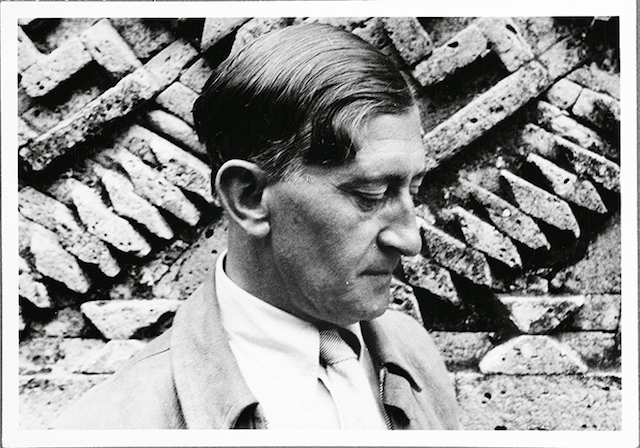
Photo of Josef Albers.
AFM: Art really has the ability to break down barriers and shed a light on different cultures. For you, being the Associate Curator at the Guggenheim, how important do you think this type of exhibit is for people to see, particularly now given the current climate within our country?
LH: The incredible thing about art is that it has the power to unify. I do think that the resonances [within this exhibit] are really meaningful. There are so many different ways to approach the material and also the place that’s represented. I think what I’ve witnessed, and also what I’ve seen since the show has opened in Phoenix and New York, our immigrant communities who came to the exhibition and responded to it, was that for many people, it’s home. It has had a very personal resonance with those communities and then also with other communities who are viewing it from a travel or tourism perspective, have gone to these sites and have therefore walked away with a different meaning and a different personal connection. Josef Albers was a German immigrant to the United States, so that carries a very powerful message within the story, too. But, I think what’s important to remember in the exhibition is that these artists [Josef and Annie Albers] were traveling to Mexico in the 1930’s, when there really wasn’t a tourism industry yet. They were not explorers, but they were curious tourists who became a part of some artistic communities while they were traveling through Mexico, and there was an exchange of ideas that took place. The power in art – as I said before – to unify and to create a space for conversation and dialogue is something that I think is apparent in any exhibition today of modern or contemporary art. I hope that people will come to the show and bring their own kind of perspectives, resonances and stories, and will then share them with one another during the course of the show. Josef certainly was an artist and educator who believed in the kind of generosity of art and possibility to speak to people in many different ways. He made work that allowed for that.
AFM: And Lauren, working for a place like the Guggenheim, I know that you’ve probably seen dozens and dozens of collections and exhibitions. What would you say to convince people to pay a visit to this exhibition in particular? What makes it unique or different from other exhibits and collections that focus on indigenous people and the vibrancy of their cultures?
LH: Well, what I would say is that the audiences in Phoenix should come and see this show because it’s the first time that Josef Albers has had an exhibition in Arizona. So, I think for many people, this will be the first time that they’ve seen this work in a significant way. One hundred works is a lot and it’s the first time that this much work – especially from this time period – was shown anywhere in the United States. Many of these works were not known during his lifetime and have therefore never been shown before. So, there are so few paintings in particular that have not been viewed by the public since the 1940’s. It’s a real opportunity for a new generation of viewers to get to know Josef Albers and they may not have another chance, so they should go see this show. It’s not just about greatest hits; there’s a lot of scholarship and there’s great publication available, as well. But, I would also note that there are so many different entry points to this exhibition. It’s not just about abstract painting, it’s also about photography. So, you can look at it from the perspective of architecture, from the perspective of travel, from abstract painting, from color. So, there’s a lot of different ways for audiences of all ages to engage with the show.
AFM: As a fan of art yourself, are you drawn to certain collections? Or do you have a sort of theme for exhibitions that you try to bring to life for audiences as an associate curator?
LH: So, I am a collections curator here [at the Guggenheim], so I focus on permanent collection holdings. I’ve always had an interest in unearthing the kind of gems of collections that are overlooked, for one reason or another, and bringing them to life so that scholars, students and also the general public, has the opportunity to see these works. For this show, our photo collages had never been exhibited. So, I found them in our storage facility and was so excited and interested by these images from the 1930’s, because you can actually see that some of the archeological sites are being excavated in the photos. If you look at one site from the 1930’s to the 1950’s, their unearthing new discoveries. To me, that kind of idea of discovery both in the show and in my own practice, is something that has always drawn me back to the Guggenheim’s collection, and also kind of trying to reframe the great masters of art history and looking at artists or practitioners who have – historically – been overlooked, whether that be because they are a woman or because they were working outside of the main ideas of recognized artistic production. That has always been my area of interest, but generally, I work in all medians and time periods.
Josef Albers in Mexico is in display at The Heard Museum through May 27.
